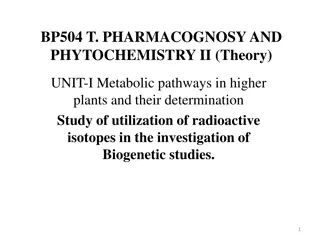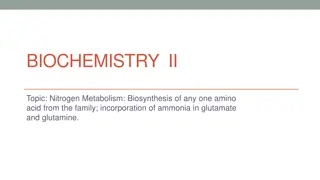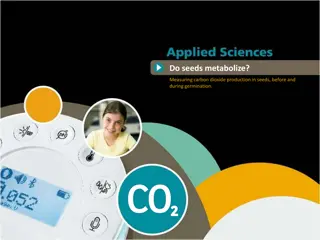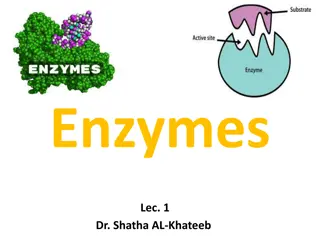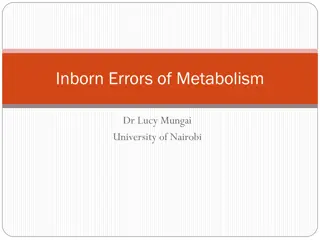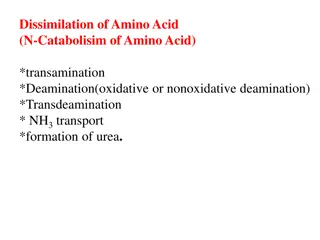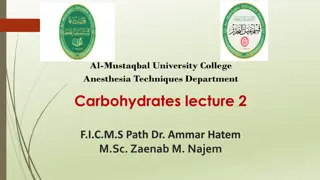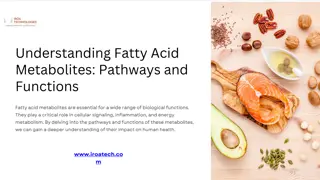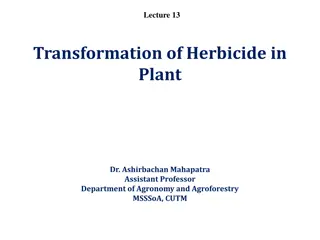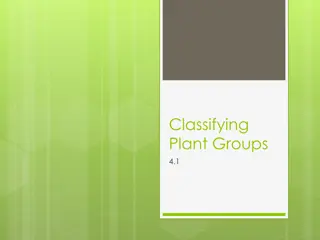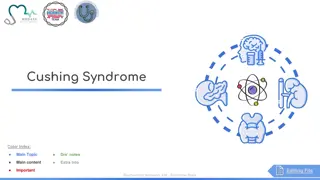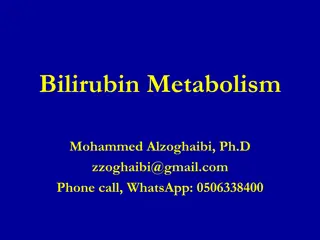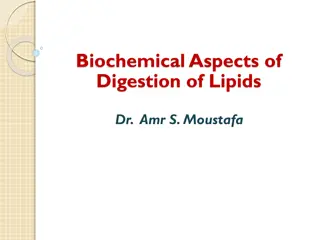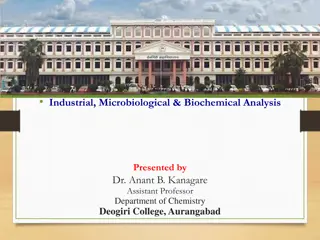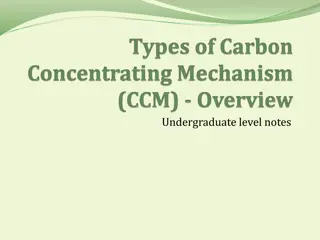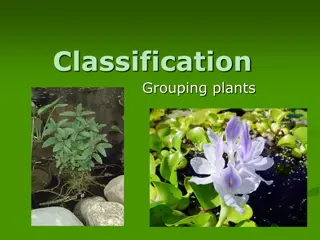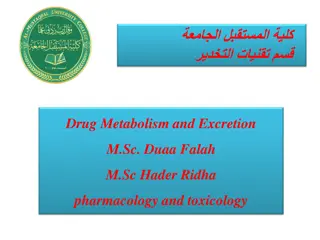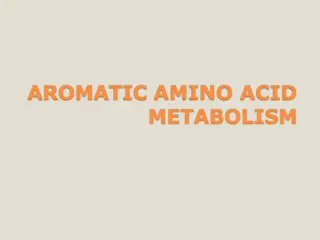Metabolism and Transport in Plants: Understanding Biochemical Pathways
This course at King Saud University dives into the intricate world of plant metabolism, enzymatic reactions, and transport mechanisms. Students will explore key concepts such as enzymes in botany, metabolic principles in plants, and the role of coordination and hormones. Through lectures, exams, and practical lab work, participants will gain a deep understanding of how plants function at a molecular level. Required readings and assessments will solidify their knowledge in plant physiology and biochemistry.
Download Presentation

Please find below an Image/Link to download the presentation.
The content on the website is provided AS IS for your information and personal use only. It may not be sold, licensed, or shared on other websites without obtaining consent from the author.If you encounter any issues during the download, it is possible that the publisher has removed the file from their server.
You are allowed to download the files provided on this website for personal or commercial use, subject to the condition that they are used lawfully. All files are the property of their respective owners.
The content on the website is provided AS IS for your information and personal use only. It may not be sold, licensed, or shared on other websites without obtaining consent from the author.
E N D
Presentation Transcript
KINGDOOM OF SAUDI ARABIA King Saud University College of Sciences - Department of Botany &Microbiology Metabolism and transport in the plant BOT 379 Dr. Abdulrahman AL-HASHiMi
Course Description The Metabolism and transport in the plant course involves: Introduction to metabolism The rate and method of the enzymatic reaction Enzymes groups Factors affecting the degree of enzymatic activity Transports in the plants Plants photosynthesis plant respiration
Course Outcomes At the end of this course the student will be able to: 1. Describe enzymes in botany. 2. Understand principles of metabolism occur in plant. 3. Define coordination and hormones in plants.
References Required Textbook: Taiz L. and Zeiger E. (2002). Plant Physiology, 3rd Edition, 1. Sinauer Associates, Inc. Publishers, Sunderland, MA. ISBN: 978-0-87893-823-0. Taiz L. and Zeiger E. (2010). Plant Physiology, 5th Edition, 2. Sinauer Associates, Inc. Publishers, Sunderland, MA. ISBN: 978-0-87893-866-7.
Exams & Grading System Midterm 1: 7th week. Final Exam Lab: 10th week. Quizzes & Homework: During the semester. Final Exam: 13th week. Midterm 1: 25 % H.W.: 5% Final Exam: 40 % Final Lab Exam:20% Quizzes, Homework, Attendance & Participation: 5 %
Lecture 1 Concepts in the Metabolism
Closely related fields 1. Plant morphology (structure of the plants) 2. Plant ecology (interactions with the environment) 3. Phytochemistry (biochemistry of the plants) 4. Cell biology (cell structure and function) 5. Genetics (genes, genetic variation and heredity) 6. Molecular biology (biology at the molecular level)
Introduction In the early 20th century, due to discovery of various metabolic pathways, biochemistry was dominated by organic chemistry, followed by enzymology and bioenergetics Some of the analytical techniques which made study of biochemistry possible included isolation of organelles, high- performance liquid chromatography, electrophoresis, use of radioactive tracers, plant transformation techniques using Agrobacterium tumefaciens, gene silencing, forward genetics, reverse genetics
It is now possible to have complete understanding of the interconnectivity of metabolic pathway. Autotrophs are able to synthesize organic material from CO2 and H2O, deriving energy either from the chemical reactions (chemoautotrophs) or by utilizing light energy (photoautotrophs)
Heterotrophs, including mammals, have to depend on the autotrophs for the availability of complex carbon containing organic substances. Sum total of all chemical reactions occurring in a living being are called as metabolism. Metabolic pathways include precursors, which are converted to products. Various intermediates are called metabolites. Combined activity of all metabolic pathways involved in interconversion of precursors, metabolites, and products is called intermediary metabolism
Primary metabolites are theintermediates or the products of a pathway, which are used for growth, development and reproduction of the organism Secondary metabolites are bioactive specialized compounds produced in a metabolic pathway which are used to protect plants against herbivory and microbial pathogen infection or to attract pollinators or seed dispersal animals. Metabolism includes both anabolic and catabolic reactions
Anabolism: all the reactions involved in conversion of simpler molecules to complex ones. This requires input of energy and the pathway involved is a divergent Pathway. Catabolism involves conversion of complex substances into simpler molecules, which is coupled with release of energy.
The catabolic pathways are convergent pathways since many of the metabolic reactions converge to join the pathway involved with release of simpler molecules
The energy transitions in these pathways are mediated through two high-energy molecules which are reduced form of nicotinamide dinucleotide (NADH), and adenosine triphosphate (ATP). ATP is a high-energy phosphate compound, which mediates energy transfer, while NADH is the donor for high-energy electron transfer.
All living organisms have the unique ability to adjust to the changing environment through alteration in their metabolism even though maintaining their internal cellular environment. Unlike animals, plants are sessile and are exposed to harsher conditions. They have more robust metabolism, which is evident from flexibility in their metabolism and metabolic redundancy
Not only that, metabolic flux (rate of movement of metabolites in a pathway) should also be regulated according to the need of the cell, tissue, or the organism. The metabolic flux is achieved through regulation of metabolism by pacemaker enzymes which are responsible for catalyzing rate-determining steps of metabolic pathways.
Understanding the regulationof such enzymes at the expression of gene level or at the level of protein degradation would help in producing plants with altered metabolism (metabolic engineering). Many enzymes involved in a pathway have been proposed to exist as multi-enzyme complexes (metabolons) as means of metabolic channeling
Metabolic channeling allows direct transfer of biosynthetic intermediates from one enzyme to another in a pathway, minimizing their loss due to diffusion Each cell compartment provides optimal conditions for specific metabolic pathways to occur at the optimal level
Exchange of metabolites between the compartments is regulated by the transporters localized in the membranes. Plants are unique in having plastids which house the enzymes for photosynthesis. Besides photosynthesis, the enzymes for lipid and terpenoid biosynthesis, for biosynthesis of chlorophyll and related pigments, and for starch biosynthesis as well as many enzymes of nitrogen
Metabolism are also present. Both plastids and cytosol contain enzymes of glycolysis as well as for oxidative pentose phosphate pathway
Any QUESTIONS ?


